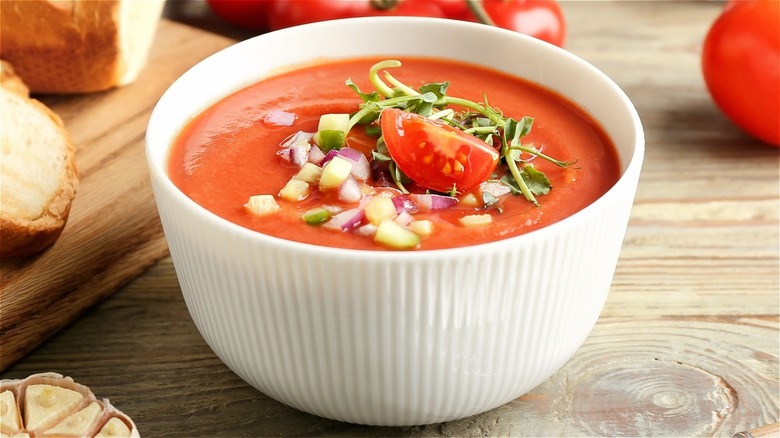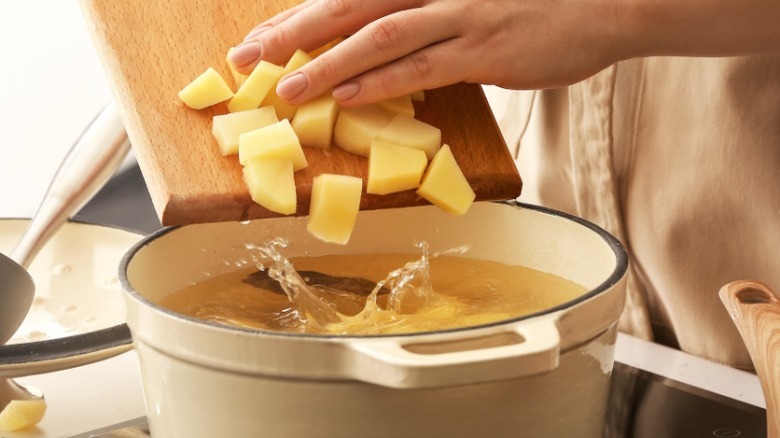A Big Mistake To Avoid When Making Blended Soup
It's official: every season is soup season. Even if you're wearing shorts and sandals instead of a sweater and boots, you can imbibe in a delicious bowl of something that will comfort your soul and fill your belly.
Not only can soup serve as a delicious, balanced meal, but said recipes are also a versatile culinary weapon to have stashed in your arsenal. Most warm soups start off with aromatics (think onions and garlic) according to the Daily Meal. Once those ingredients fill your kitchen with their savory aromas, you can add in whatever suits your particular craving. Cold soups are equally simple because you can use raw ingredients, per the Akron Beacon Journal, though you can also use cooked ingredients and stash the soup in the fridge until it's cold.
If you do prepare soup regularly, an immersion blender is a helpful tool to have on hand, per Food & Wine. Many of the most delicious soups from around the world have a smooth or creamy texture. These handheld blenders allow you to blend soups in the pot in which you cooked them. It saves you time and dishes. However, your soup ingredients must be cooked perfectly to achieve the ideal consistency.
Perfectly cook your ingredients for smooth, creamy soups
If you're looking to conquer the best soup recipes this season, avoid the mistake of not cooking your ingredients properly before blending them. Bon Appetit wrote that this is a common mistake when preparing creamy, blended soups. If the vegetables are undercooked, for example, your soup will have an uneven consistency that's thin in some portions and chunky in others. But, if you cook the ingredients too long, they can develop an unpleasant chewy texture.
Optimally cooked soup components can be achieved if you take a few precautions. First, chop whatever you're cooking into pieces of the same size. When you think everything is done, inspect several pieces to make sure it's all evenly cooked. Once everything is perfectly prepared, you can add your liquid. And, if you make the mistake of adding too much liquid and create a runny soup, Southern Living suggests adding flour or cornstarch to thicken it up.

